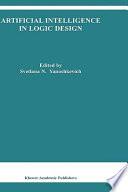
Artificial Intelligence in Logic Design
There are three outstanding points of this book. First: for the first time, a collective point of view on the role of artificial intelligence paradigm in logic design is introduced. Second, the book reveals new horizons of logic design tools on the technologies of the near future. Finally, the contributors of the book are twenty recognizable leaders in the field from the seven research centres. The chapters of the book have been carefully reviewed by equally qualified experts. All contributors are experienced in practical electronic design and in teaching engineering courses. Thus, the book's style is accessible to graduate students, practical engineers and researchers.
- ISBN 13 : 9781402020520
- ISBN 10 : 140202052X
- Judul : Artificial Intelligence in Logic Design
- Pengarang : Svetlana N. Yanushkevich,
- Kategori : Computers
- Penerbit : Springer Science & Business Media
- Bahasa : en
- Tahun : 2004
- Halaman : 334
- Halaman : 334
- Google Book : http://books.google.co.id/books?id=yqIRd3vB8foC&dq=intitle:logic+algorithm&hl=&source=gbs_api
-
Ketersediaan :
from Mishchenko's and our algorithms confirmed the above observation. The
decision diagram based exact algorithms are also inefficient for larger difficult
problem instances (e.g. for benchmarks “Flag” and “Mashroom” having 28 and 22
inputs, correspondingly (Mishchenko et al. 2000)). 5.2. QuickScan Inefficiency of
exact algorithms for larger instances of MISP motivates the development of faster
heuristic algorithms. Although the heuristic algorithms cannot guarantee the
optimal ...
